North Carolina’s Thermal Belt Rail Trail
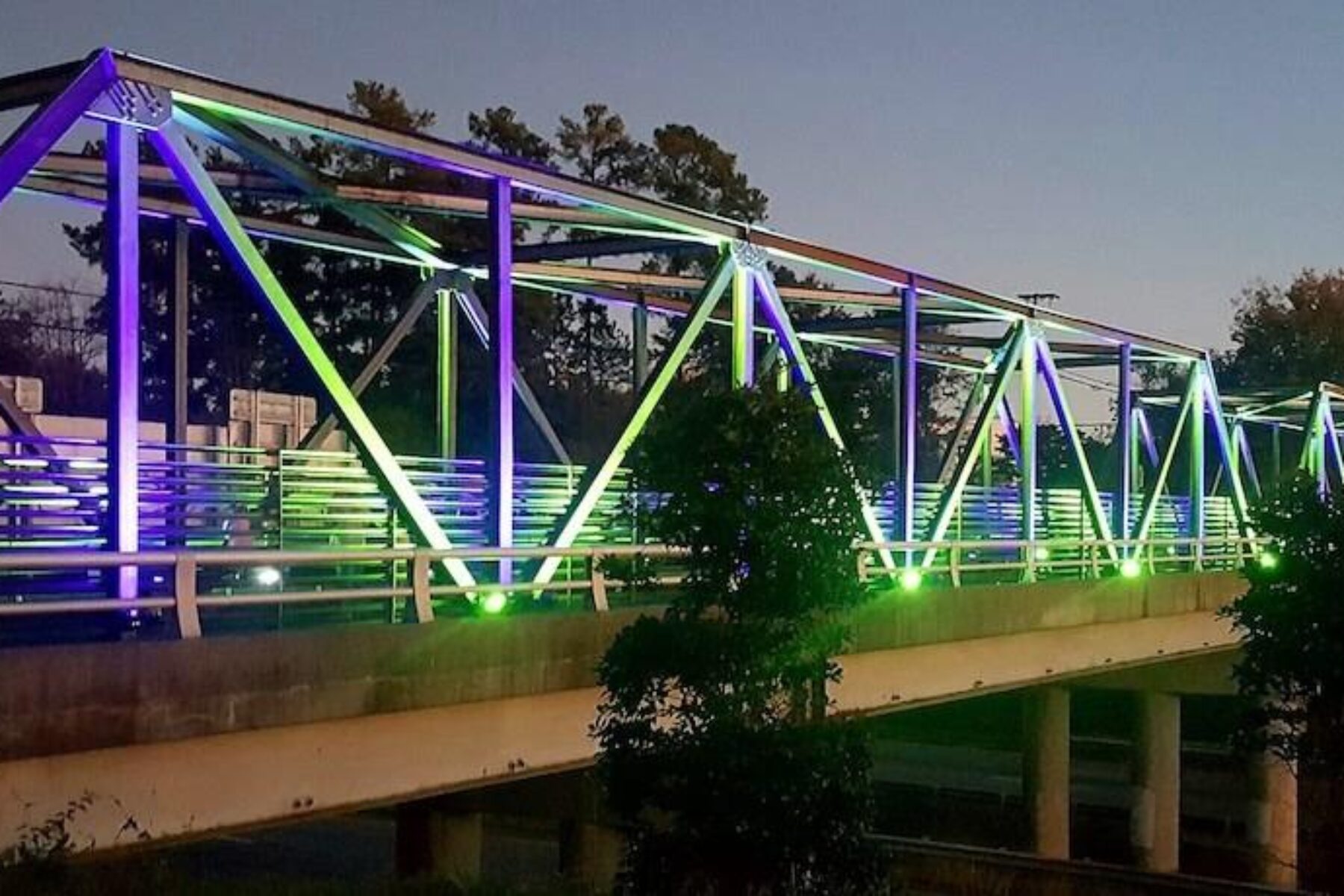
Trail of the Month: February 2020
“This is something that created a common bond. It really pulled us all together. It really connects us all.”
—Rutherford County Manager Steve Garrison
Back in the early 2000s when the little towns in Rutherford County, North Carolina, were reeling from the impacts of the region’s collapsing textile industry, residents were yearning for a bright spot.
They found it in an unlikely place; the same railroad line that once carried the raw materials of the region’s textile prosperity was repurposed as a recreational trail. Today, the 13.6-mile Thermal Belt Rail Trail lies where the old Southern Railroad, and later the Thermal Belt Railway, once ran.
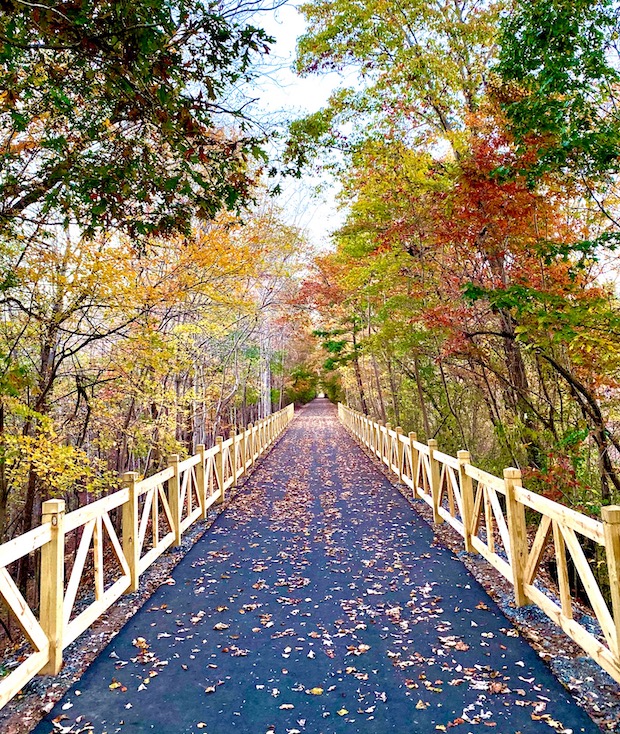
The trail has been a boon for Rutherford County on a number of levels.
“The product from the railroad made the textiles thrive 100 years ago,” said Clark Poole, executive director of the Rutherford County Chamber of Commerce. “And once again, [the Thermal Belt] is adding to our prosperity.”
Poole and other advocates say the scenic Thermal Belt Rail Trail has been a magnet for tourism in the region. And they have nothing but optimism about the future potential. But Poole says the trail’s impact on the community mindset may be its biggest achievement.
“The money’s fine, but the thing I’m most proud of is that the different entities and interests came together with a common goal,” Poole said. “When we were a textile county, all the communities were in competition. We had silos and moats. Now, the silos have been torn down and the moats filled in.”
Along the way, the Rutherford County towns of Spindale, Ruth, Rutherfordton and Forest City were getting healthier—in more ways than one. “The Thermal Belt trail brought the community out of our own personal depressions,” said Poole.
Weathering Hard Economic Times Along the Thermal Belt
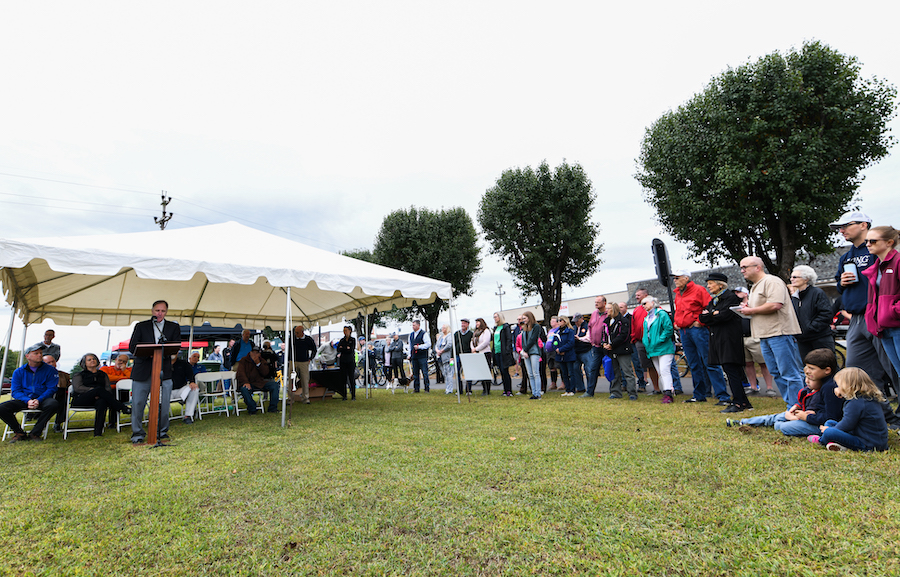
For more than a century, textile mills had been at the heart of the economy for Rutherford County.
Over the years, various railroad companies served the industry. The original railroad line was charted before the Civil War as the Wilmington, Charlotte and Rutherford Railroad and was consolidated into the Southern Railroad in 1898. Local interests bought the line in 1989, and it began doing business in 1990 as the Thermal Belt Railway (named for the temperate climate of the region’s isothermal belt), mostly for freight.
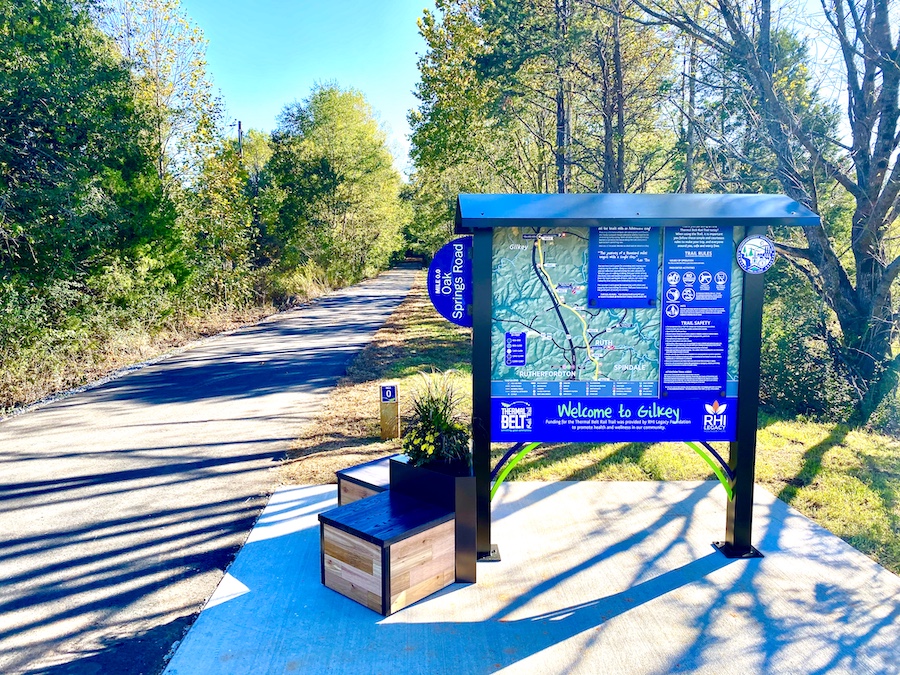
But the mills began closing in the late 1990s and early 2000s when imports from China and developing nations around the world flooded the market. Thousands of jobs were lost in Rutherford County, and unemployment skyrocketed.
Rutherford County Manager Steve Garrison started in the job about five years ago, and he says the Thermal Belt Rail Trail served as a catalyst to turn things around.
“What really makes this trail such a jewel is that the county has gone through some hard times economically,” said Garrison.
In 2010, Rutherford County’s unemployment rate stood at 19%, Garrison noted, adding, “Now, it’s the lowest it’s been since 1998—at a little more than 4.2%.”
Healthy Benefits for Every Fitness Level
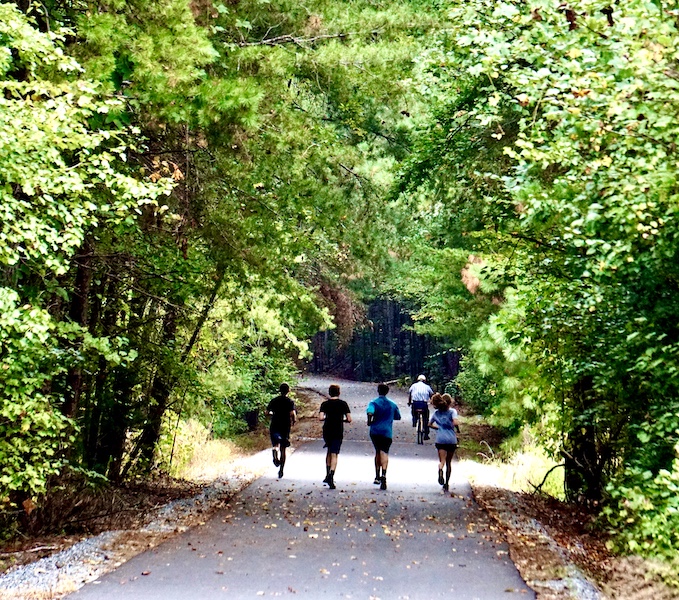
Locals say that along with the difficult economic times came unhealthy lifestyles.
“Our county, depending on the ranking, is near the bottom in healthy lifestyles [in the state]. It always fell in the last quartile,” said Jill Miracle of RHI Legacy, a joint venture of the Rutherford Hospital and Duke LifePoint HealthCare. “That was a huge factor in driving the trail.”
“Over the course of the trail, the RHI Legacy allocated over $5 million to the trail,” said Miracle, explaining that the contributions came from the proceeds of the sale of the hospital to Duke LifePoint HealthCare. And the health aspect was huge.
“[The trail] is very tied to the prevention of disease and healthy eating and an active lifestyle,” said Miracle.
Because the trail is free to use, and runs throughout the county, it was seen as an effective way to encourage people to get active in the outdoors with their families. And the results have been gratifying.
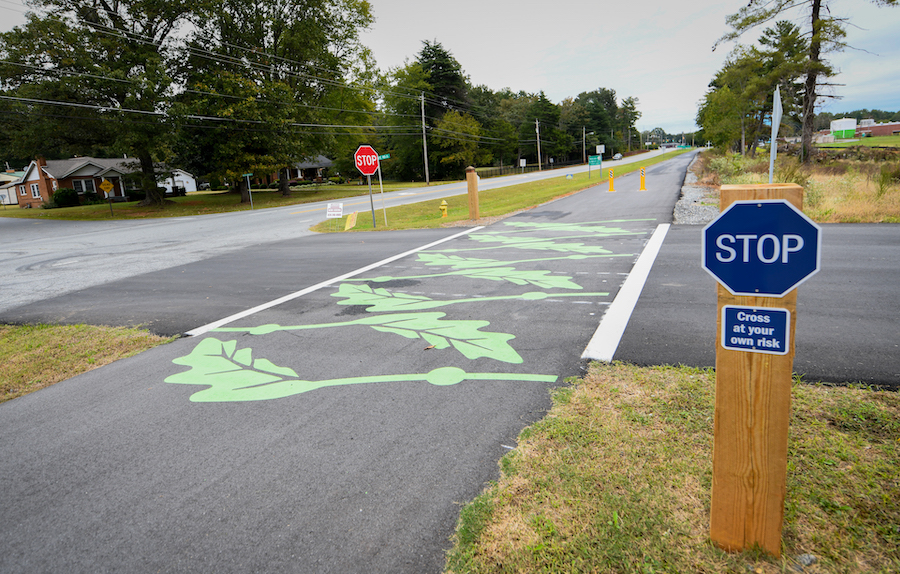
“We do not currently have trail counters, but narratively, we’re seeing that the usage at any given time is amazing,” Miracle said. “There are families and people learning to ride bikes again. You see people running and bicycling. I’ve seen a two-year-old, and I’ve seen an 80-year-old. People are using the trail to go to the grocery store. There is a church group that walks every Sunday. It’s exactly what we had hoped for.”
Dana Bradley, the outdoor programs director for the Rutherford Outdoor Coalition, says the trail’s wide, flat surface and minimal grade make it a perfect spot for people of all ages and abilities.
“It’s good for everyone—every fitness level. You see people pushing strollers, people with walkers,” she said, adding that the trail is wheelchair accessible at each trailhead.
Three times a week, Bradley leads the Rutherford Outdoor Coalition Walking Club. On Tuesdays, the club meets at the Thermal Belt Rail Trail in Forest City. Along with the exercise, “it gives people an opportunity to get out and enjoy the trail,” Bradley said.
In another version of the same concept, the Community Health Council of Rutherford County offers the Walk with a Doc program, featuring a free monthly walk with a physician.
“The trail is gorgeous in the changing seasons. In the winter, there are sometimes snowy banks. In some areas, you can see the mountains in the background.”
—Dana Bradley, Outdoor Programs Director, Rutherford Outdoor Coalition
Showcasing Changing Seasons, Charming Towns
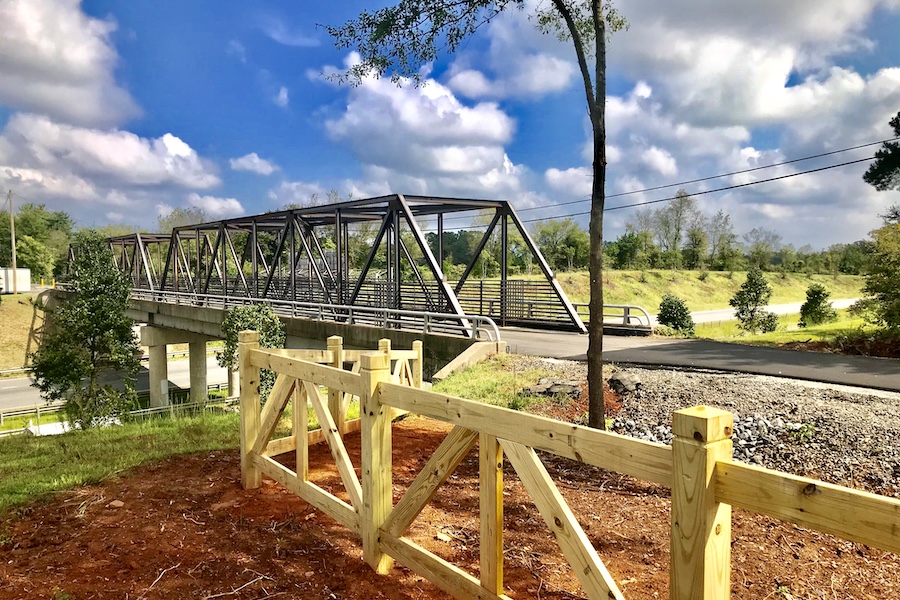
While the health and financial benefits of the Thermal Belt Rail Trail have been important, the Thermal Belt’s advocates also stress that the trail offers plenty of pure enjoyment as well.
“The trail is gorgeous in the changing seasons,” said Bradley. “In the winter, there are sometimes snowy banks. In some areas, you can see the mountains in the background.”
A portion of the trail runs through areas that are canopied with trees, according to Garrison. Other sections take trail users right into the downtown areas of the county’s charming towns, starting in Gilkey and ending in Forest City.
“It is so unique. You can go right into the middle of these small towns,” said John Condry, the former town manager in Forest City. Trail users can easily access the restaurants, bars and shops that are clustered along the Thermal Belt.
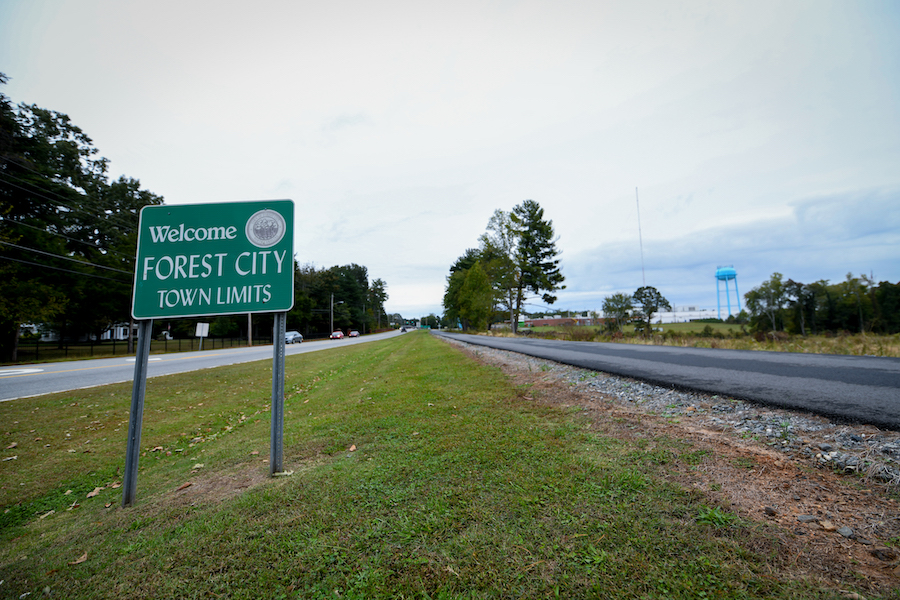
One of the highlights of the trail is the bridge over Highway 74 in Forest City. “The old steel structure bridge is a major focal point,” said Condry. “It is lit up with blue and green lights.”
Keith Webb, vice president of McGill and Associates Engineering Services, pointed out that preserving the history of the old railway line was central to the design of the trail.
“We wanted to tie the history of railroading into the trail,” Webb said. “The bridge was built in 1906. We repurposed the steel to make the new bridge. The trail ties into the old textile mills.”
Garrison added that many of the features of the railroad are built into the trail. “Some of the old rail is embedded into the trail, and the railroad is themed into the branding and kiosks,” he said.
Drawing Tourists From Far and Wide

All of those features lend themselves to the tourism potential of the trail.
“It brings in tons of people,” said Bradley. “People have read about it and come from far out of state.”
Stephen Aguierre, owner of OpenBox Bikes and Fitness in Spindale, says the trail is also a draw for cyclists throughout the region. “On good weather days, people come from Charlotte, Greenville and Spartanburg.”
Because of the trail’s flat surface, it is friendly to both families and older residents, he said.
“It is a very easy trail, with about 1% grade. Everyone can do it,” said Aguierre. “I sell bicycles as well as rent, and I had an older lady of 89 who bought a tricycle to use on the trail.”’
Catalyst for Progress and Partnerships
“We are creating a place where pedestrians feel safe.”
—Walker Harrison, Town of Spindale
With the help of the RHI Legacy and other grants, the Thermal Belt Rail Trail has been able to make relatively quick progress.
Bradley took on the job with the Rutherford Outdoor Coalition in 2014, and “at that time, the trail just ran from Spindale to Gilkey, and it was all dirt and only 6 feet wide,” she said.
Today, the entire corridor is newly paved and is 12 feet wide.
Danny Sarcy with the Rutherford County Planning and Public Works Department said a $30,000 Doppelt Grant through Rails to Trails Conservancy helped with the addition of needed amenities.
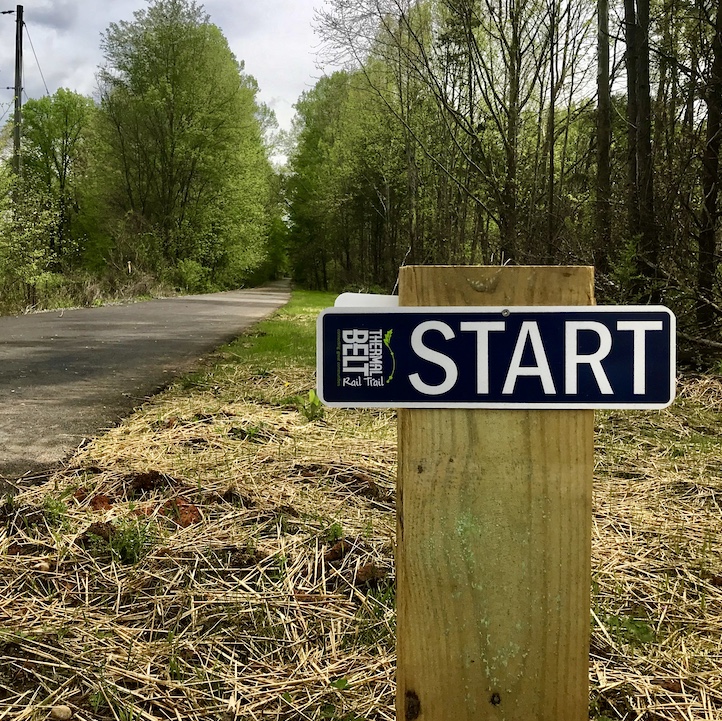
“Through that, we have water fountains installed with pet bowls,” he said. “And we have a couple of picnic shelters.” Work is also underway on better way-finding signs.
The completion of the trail has spurred other improvements in the area as well. Walker Harrison with the Town of Spindale says the town is working on a new streetscape project.
“The rail-trail parallels Main Street,” said Harrison. “We are creating a place where pedestrians feel safe.”
Overall, advocates say the partnerships have been invaluable to the progress.
“This is something that created a common bond,” Garrison said. “It really pulled us all together. It really connects us all.”
Bradley said she sees the Thermal Belt Trail as “a centerpiece of Rutherford County. It’s brought so many people together.”
Poole affirms that the Thermal Belt Rail Trail has been bright spot for the region, stating: “A lot of hours and sweat equity and hopes and dreams are tied up in this trail.”

Donate
Everyone deserves access to safe ways to walk, bike, and be active outdoors.
